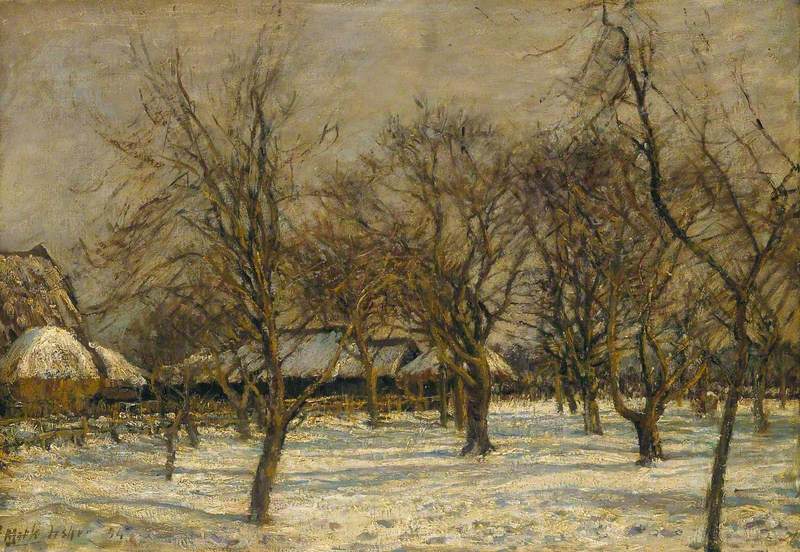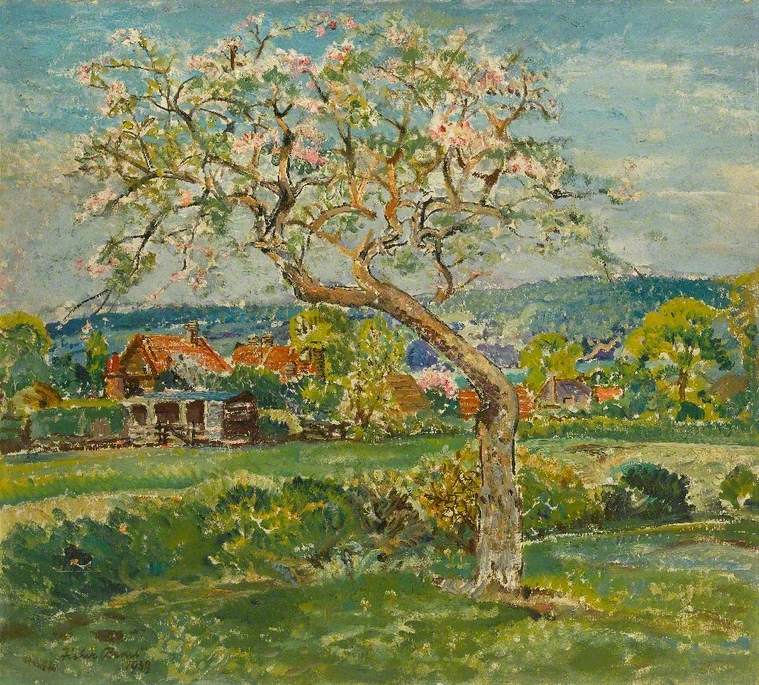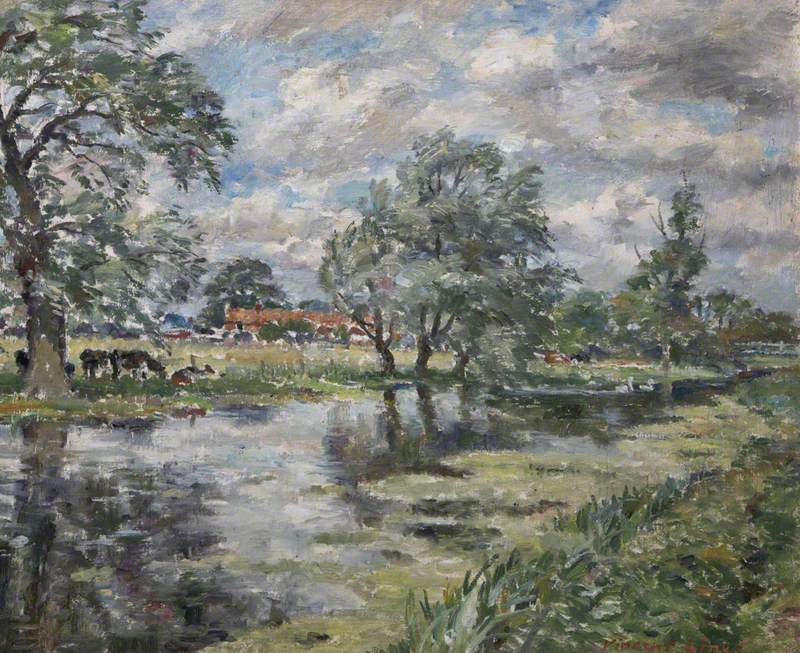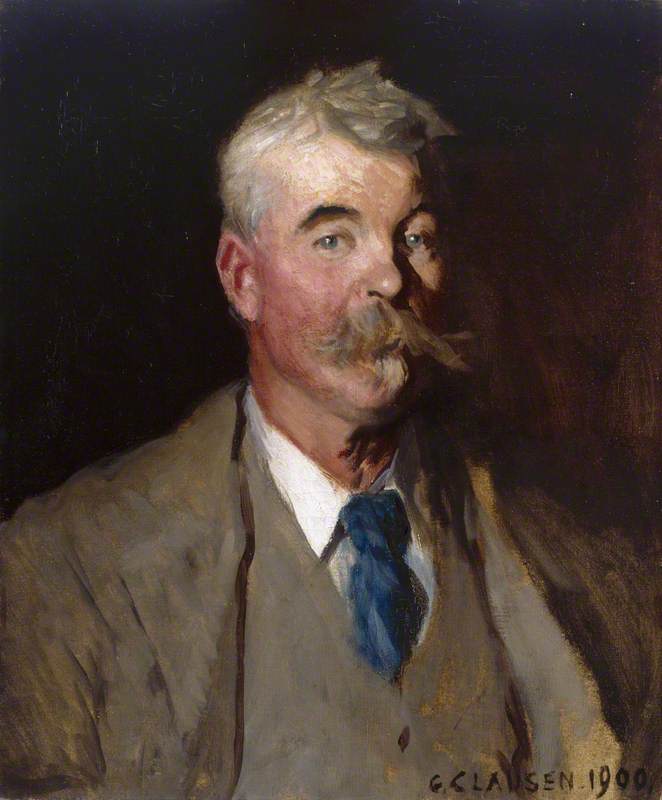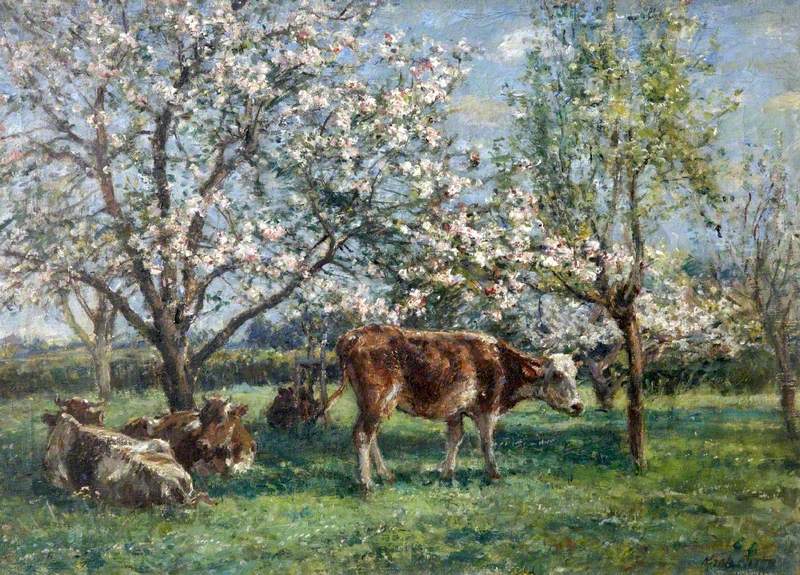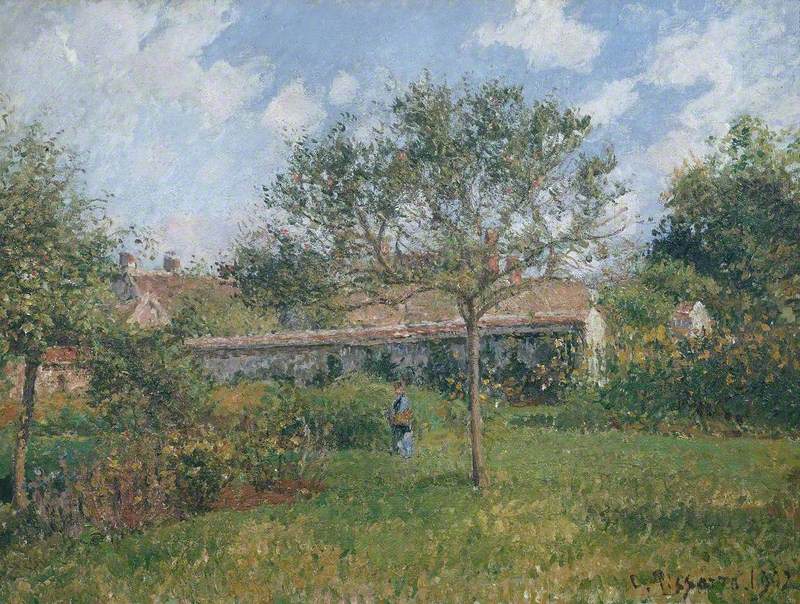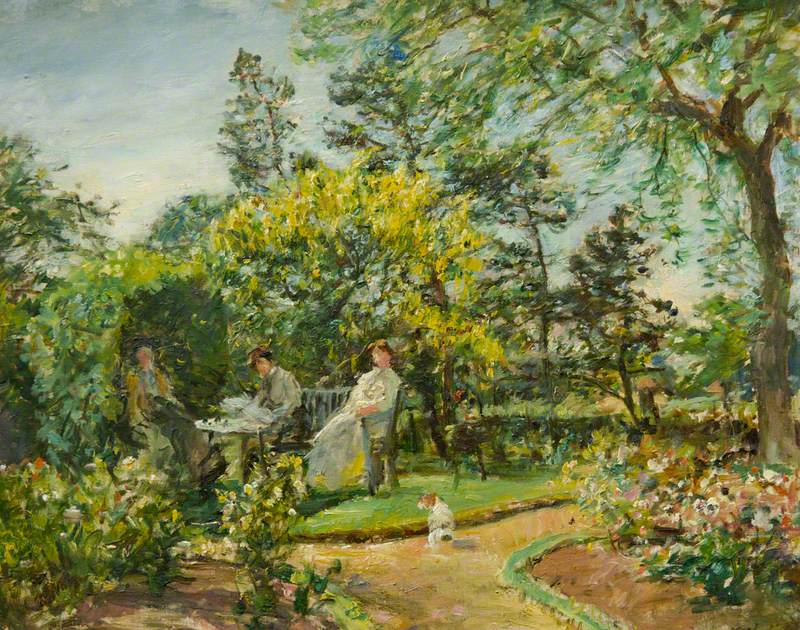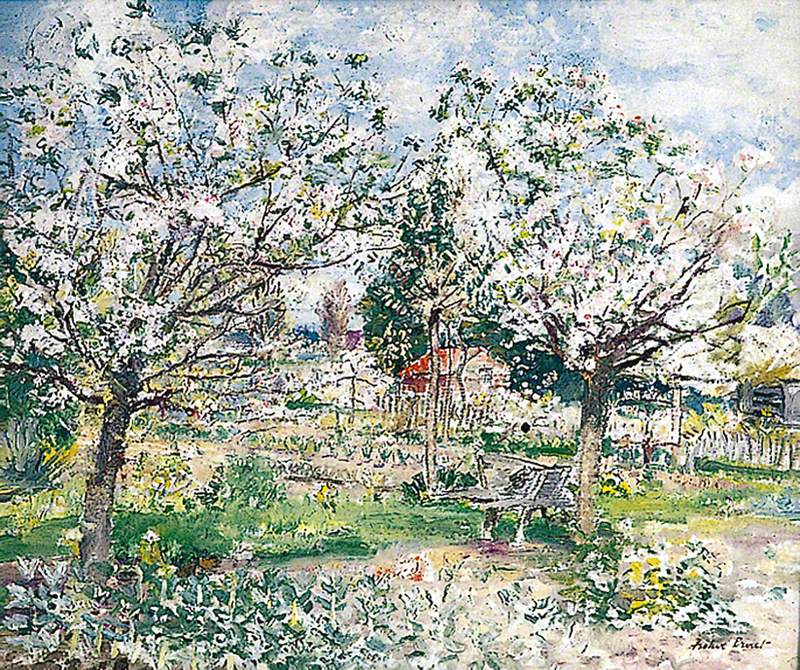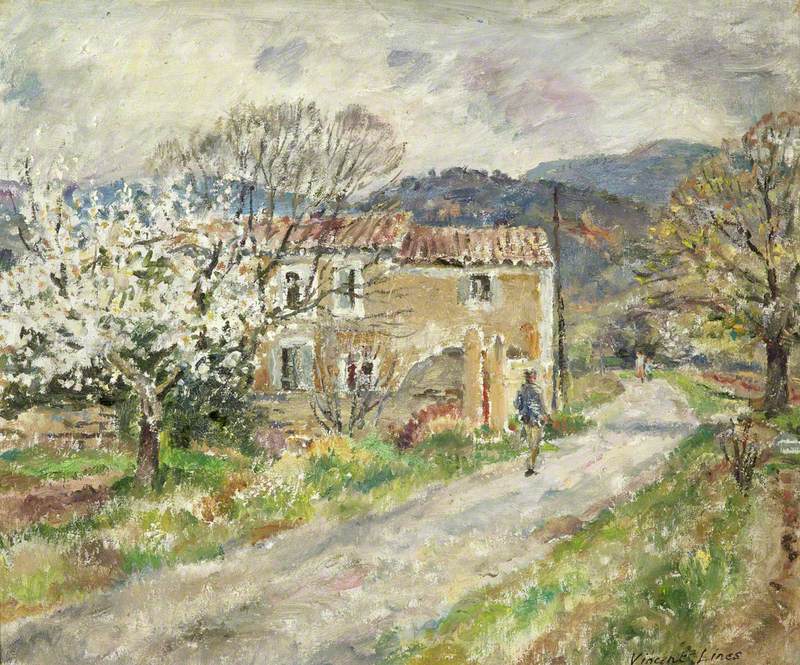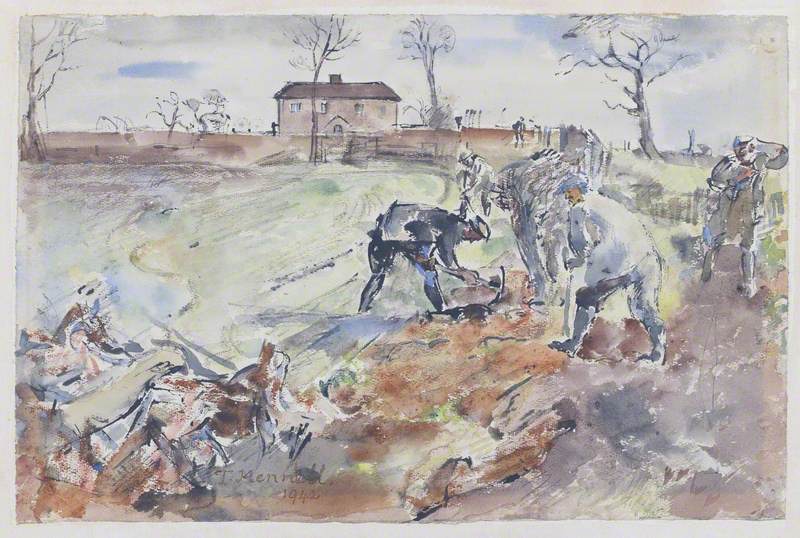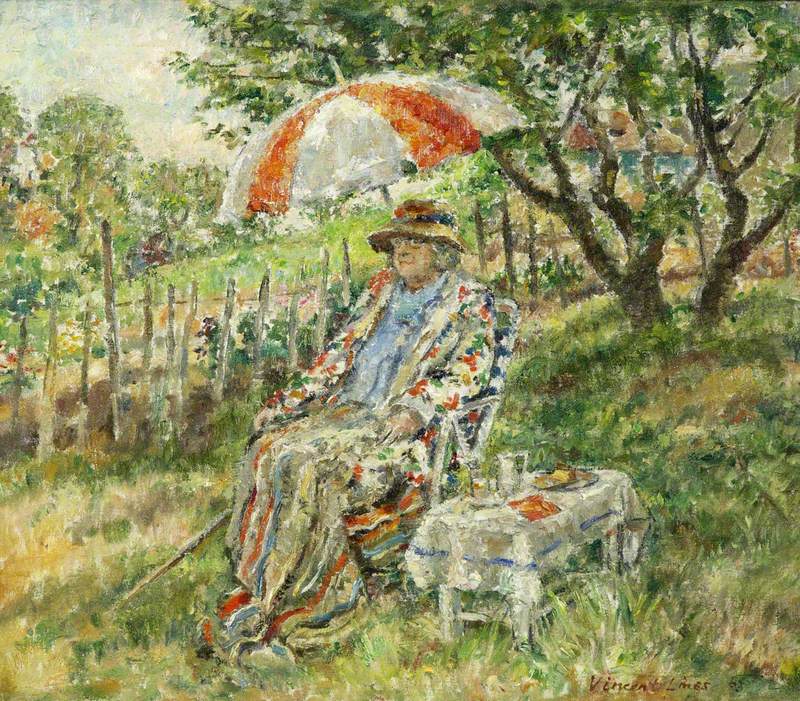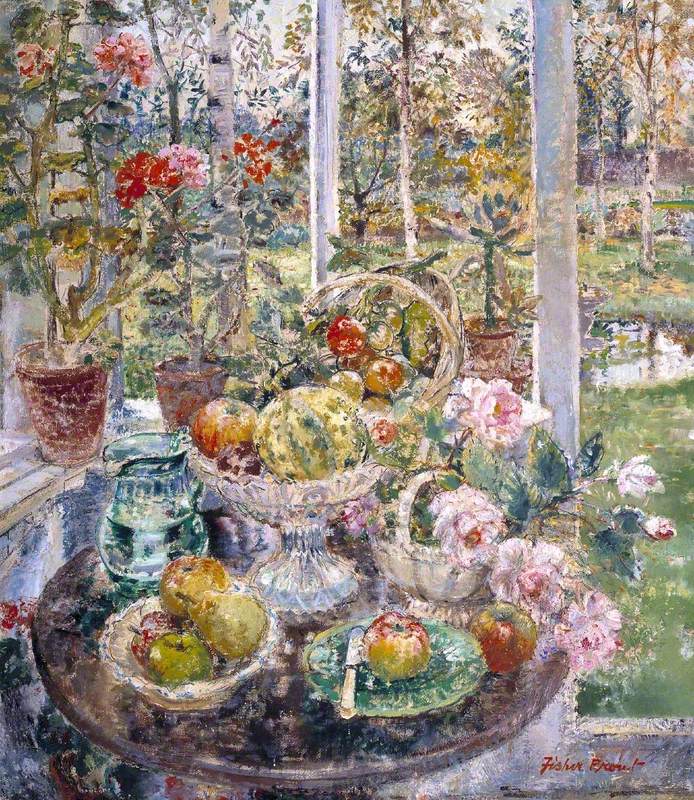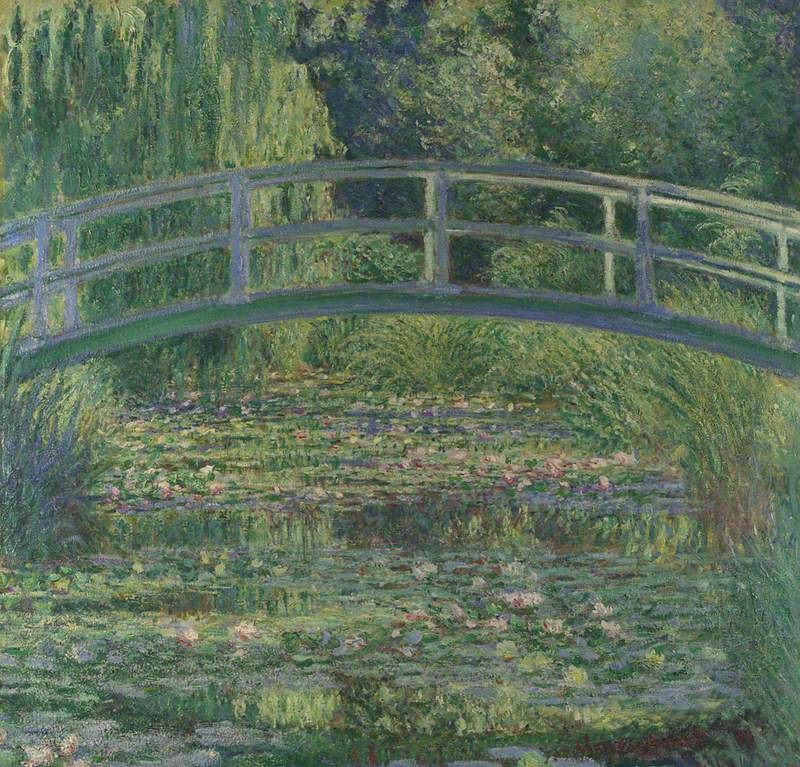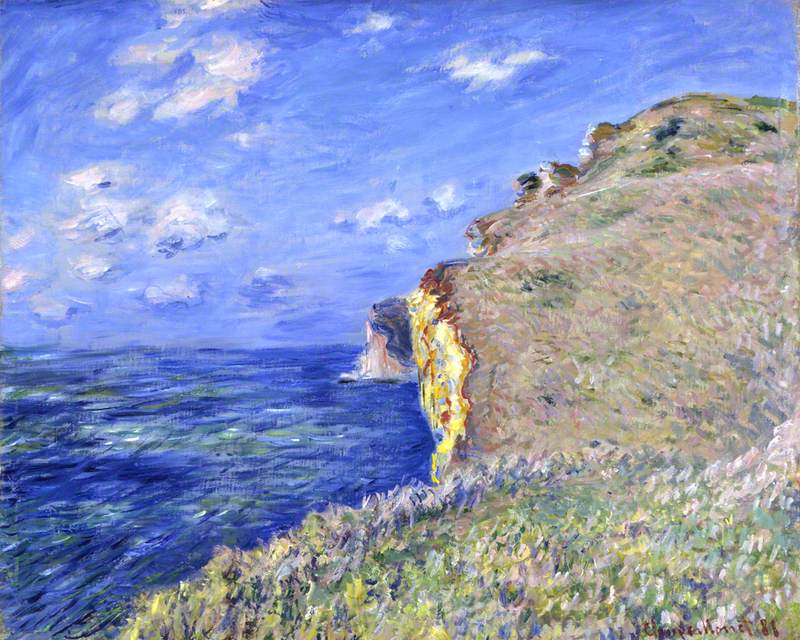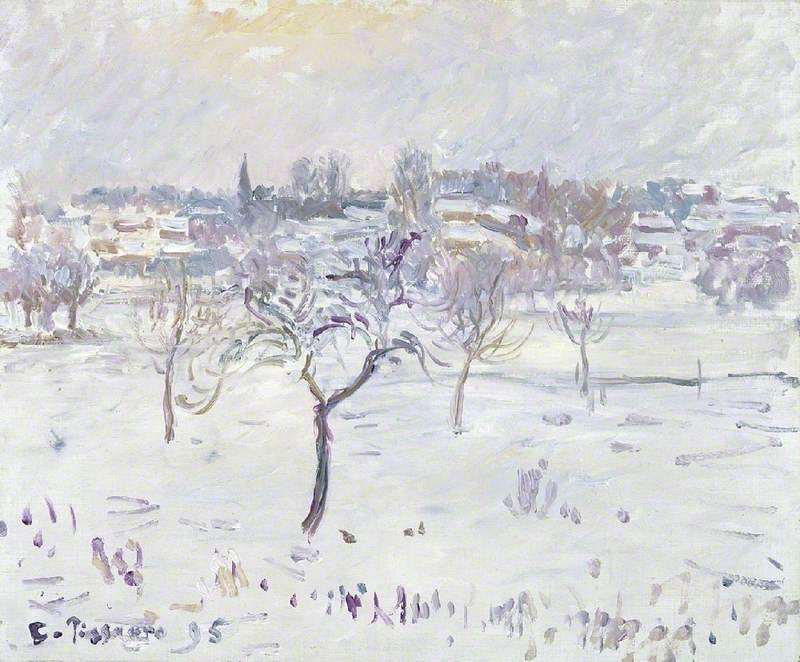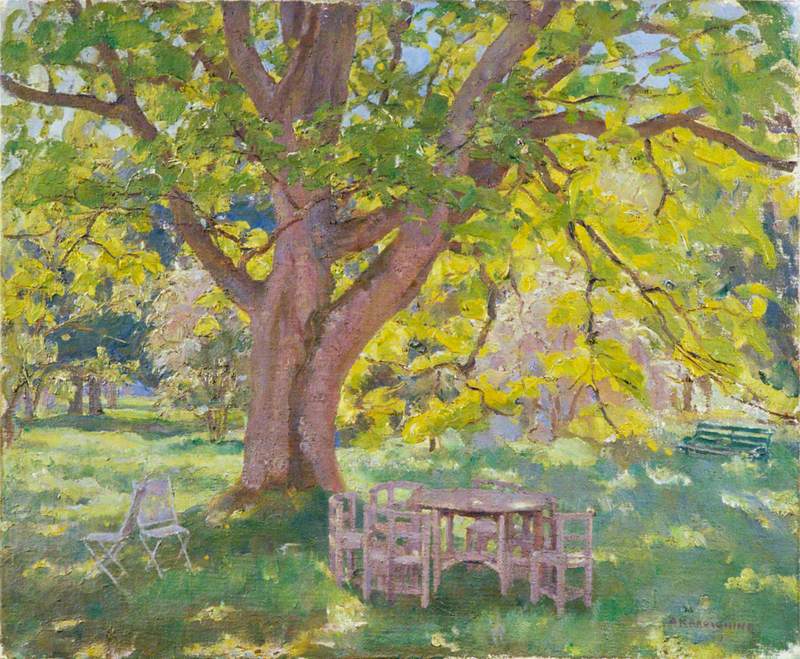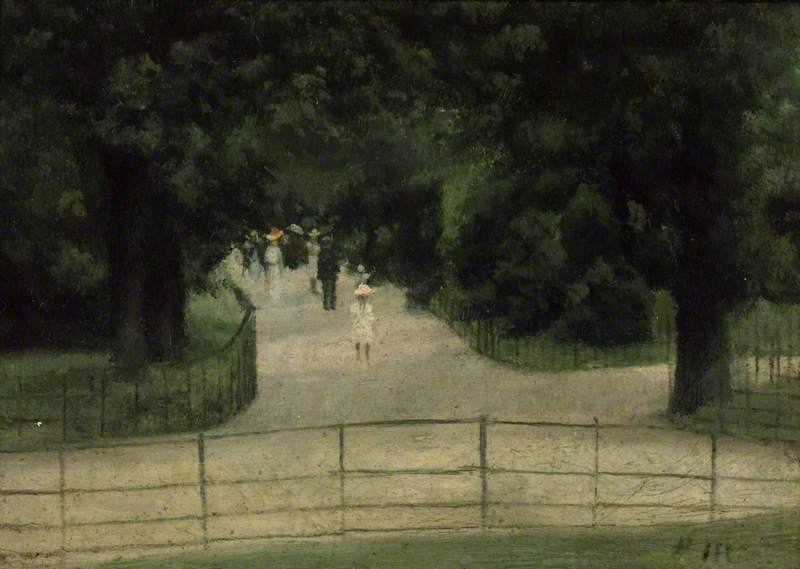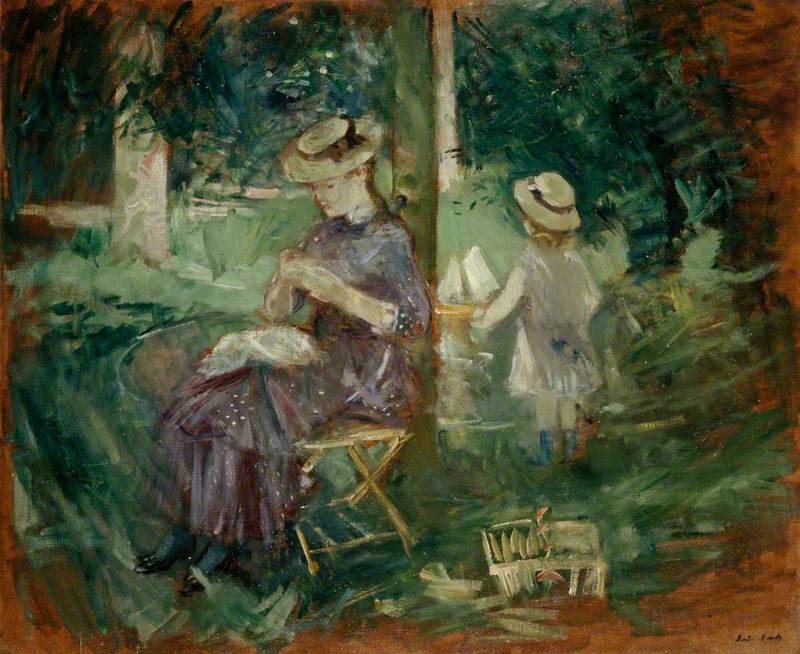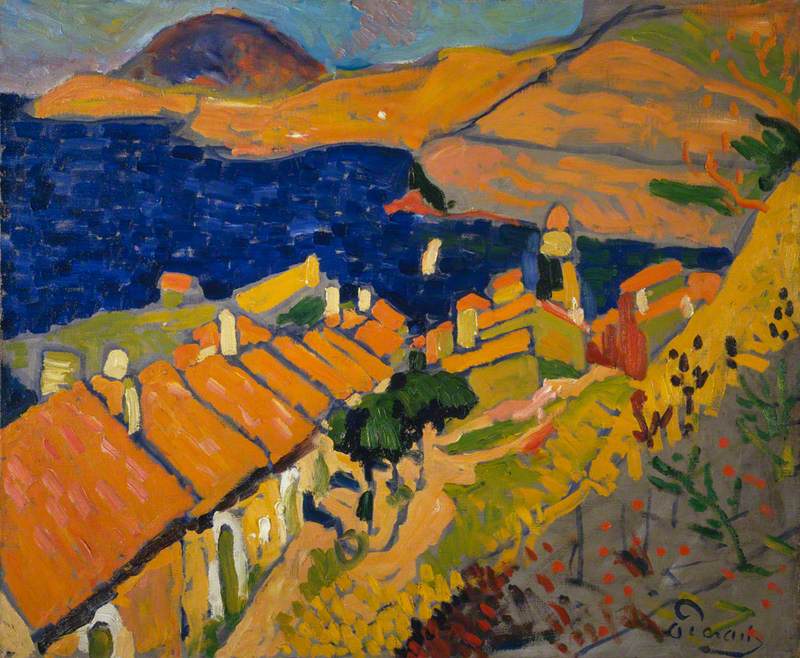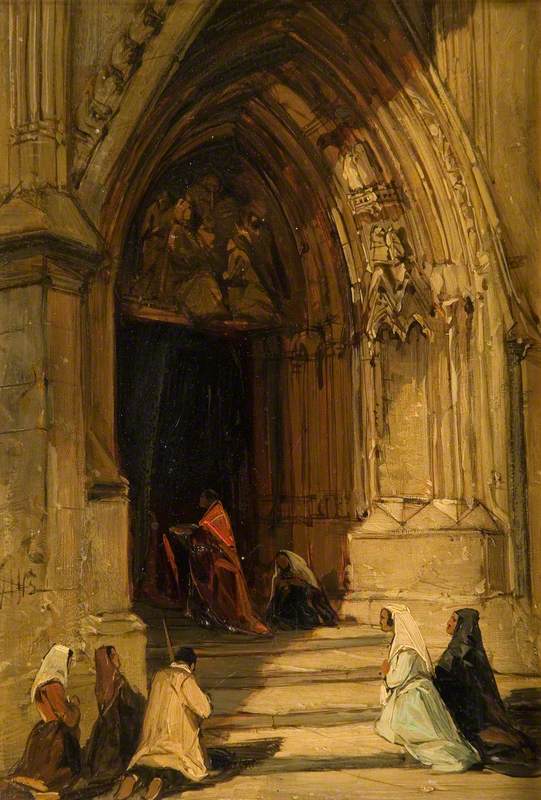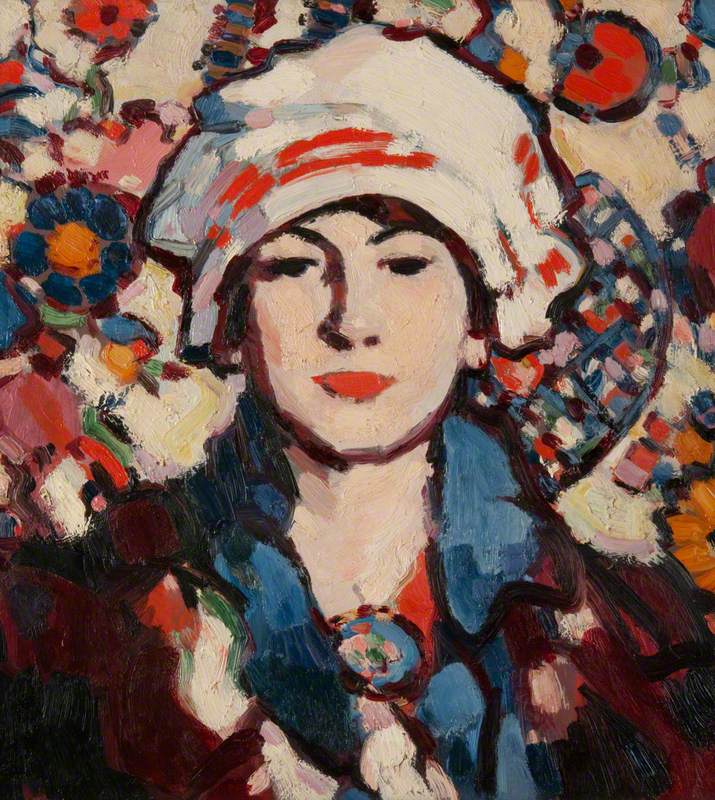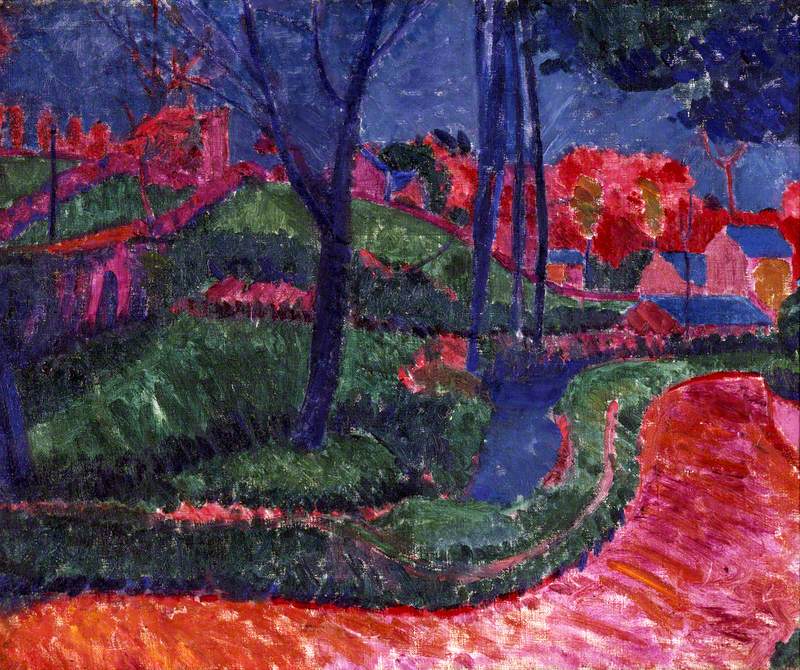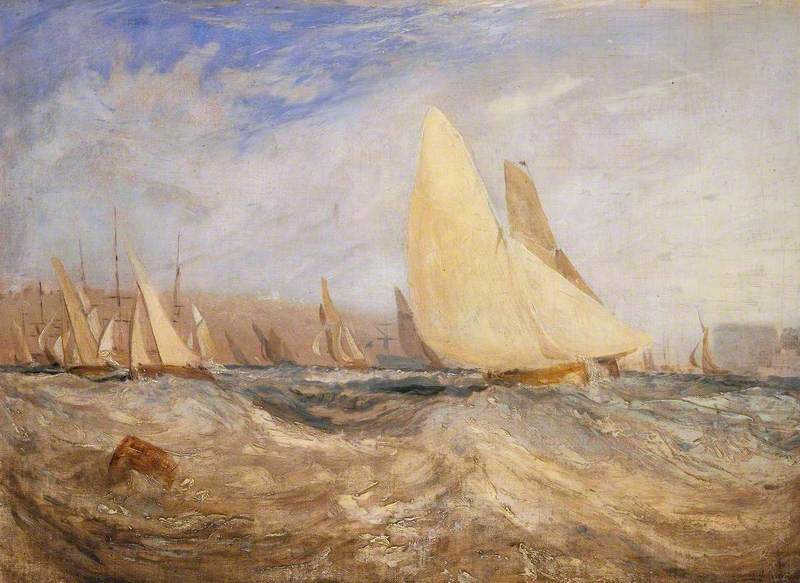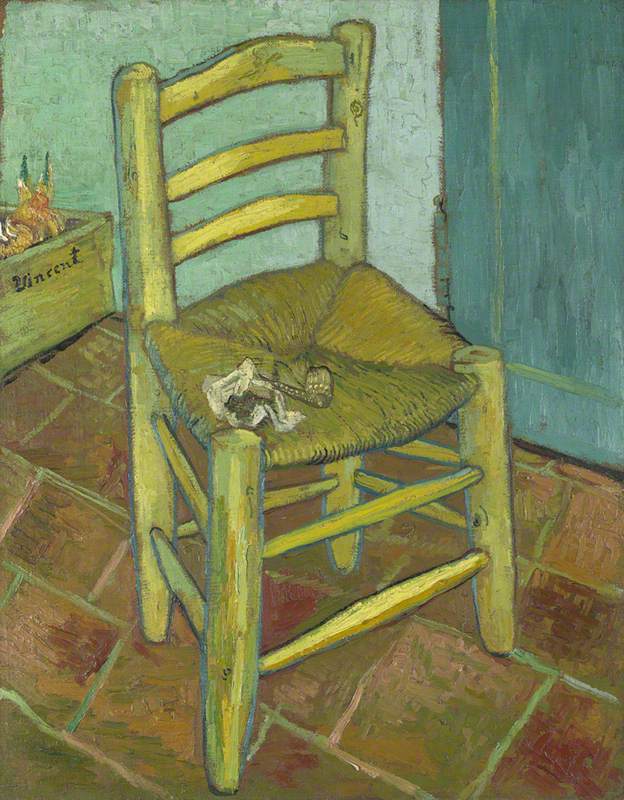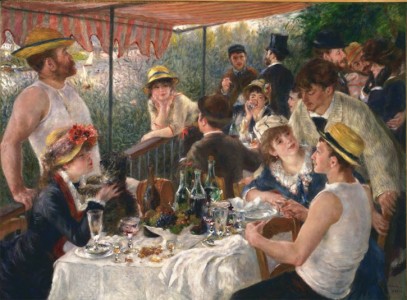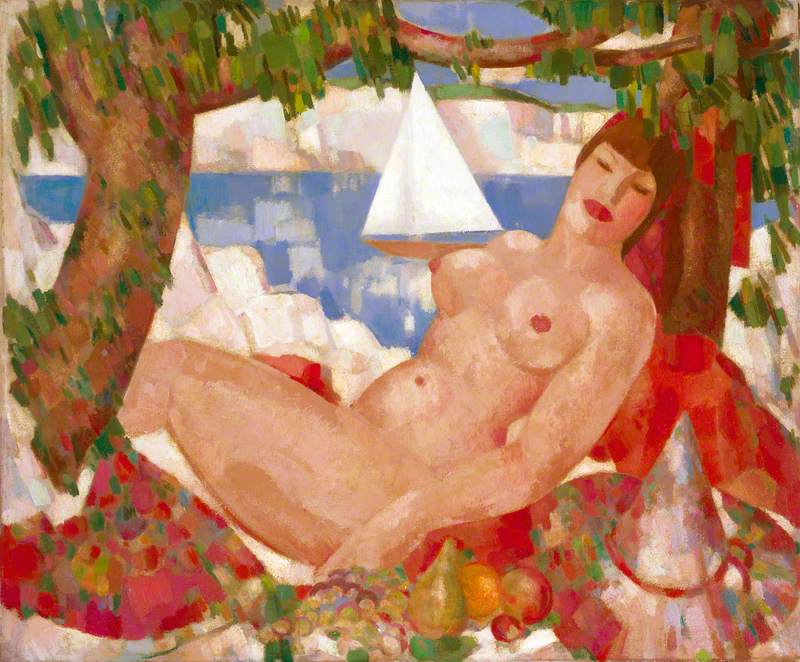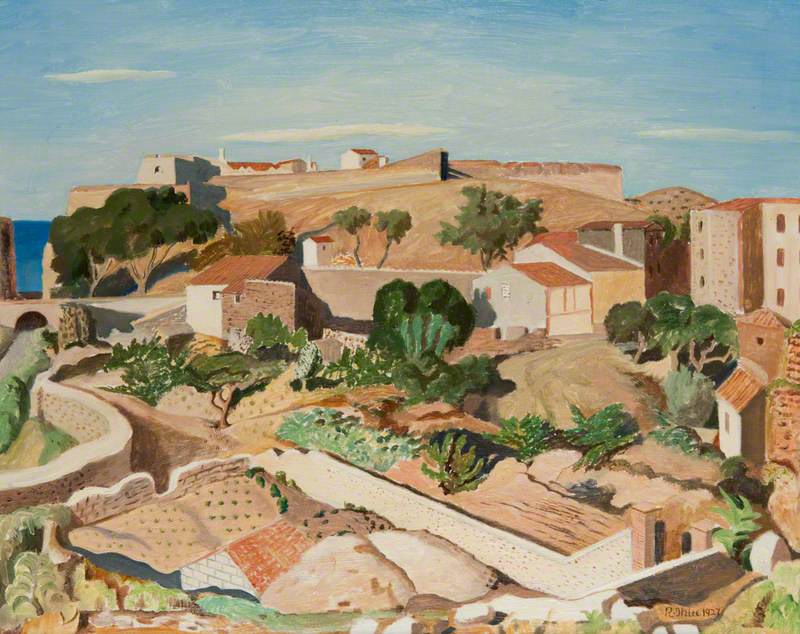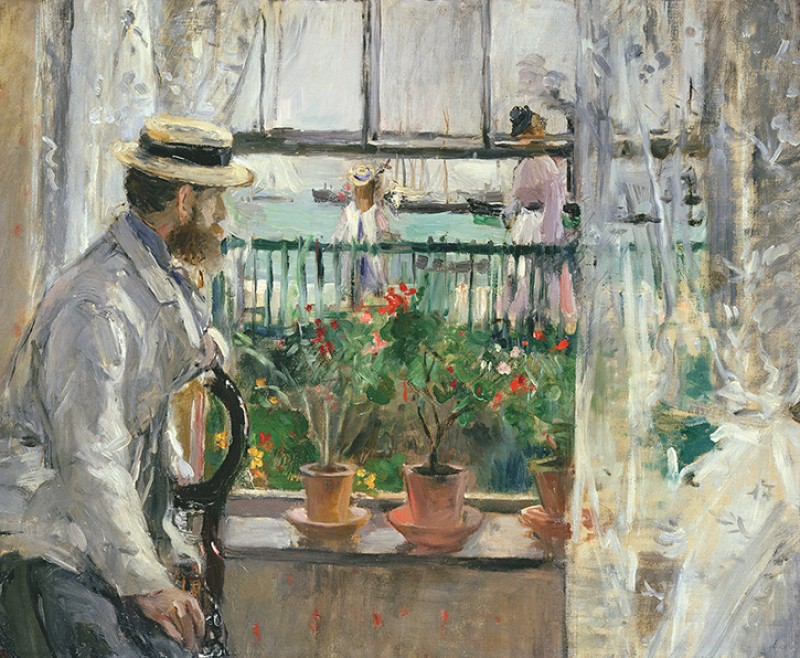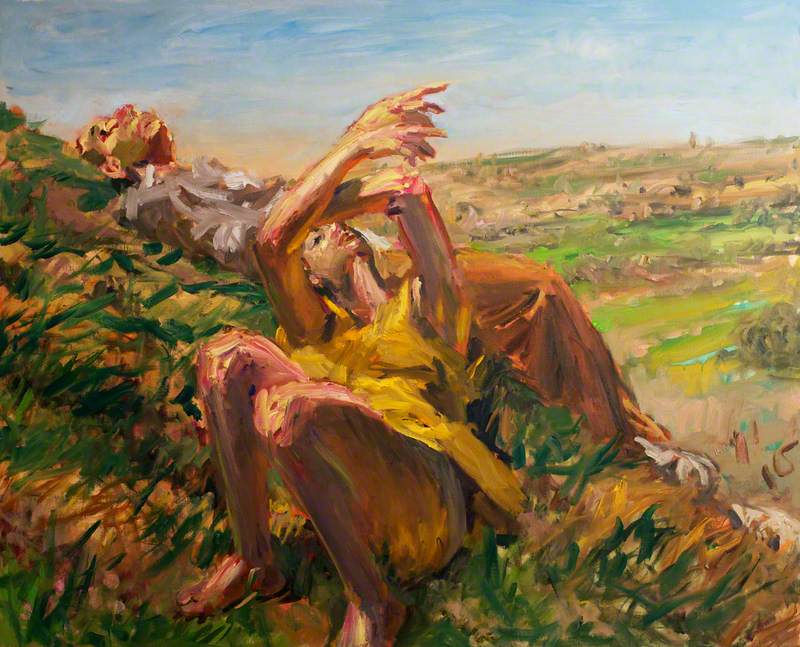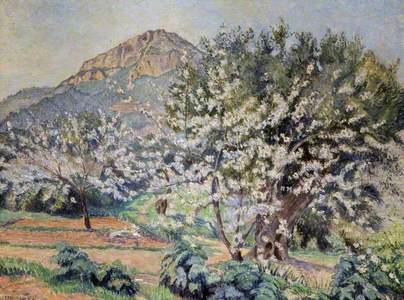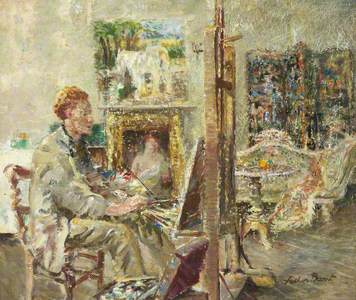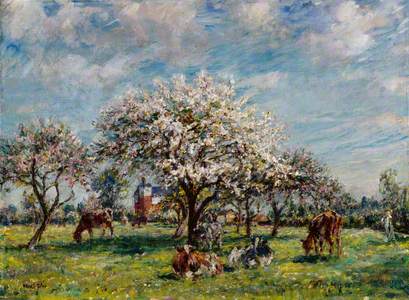This little girl, portrayed here by her father in the 1880s, grew up to become an artist herself and later gave the picture, now in the Ashmolean, to a younger friend who was also a painter.
Portrait of Margaret Millicent Fisher Prout, the Artist's Daughter
Mark Fisher (1841–1923) 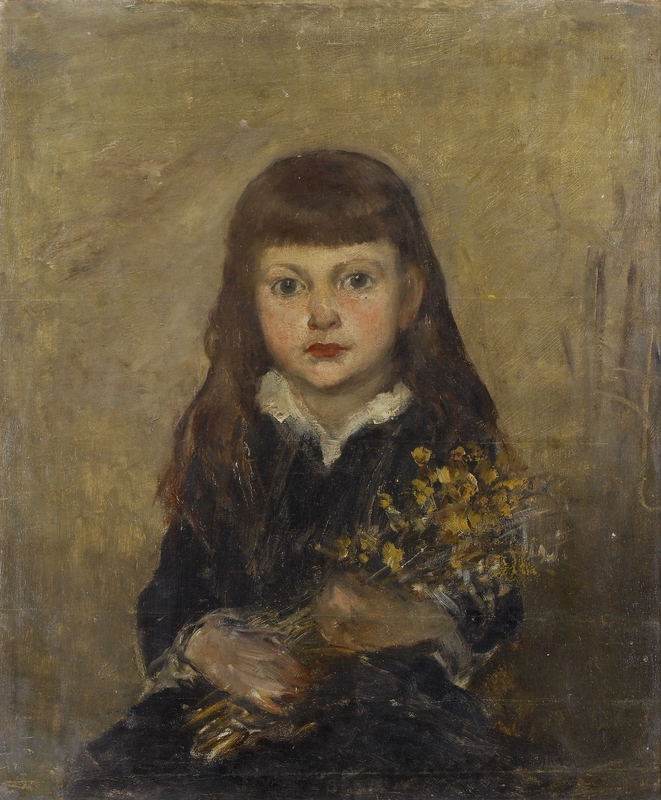
The three artists were Mark Fisher (1841–1923), his daughter Margaret Fisher Prout (1875–1965), known as Milly, and her younger friend Vincent Lines (1909–1968). All painted mainly outdoors in a similar style inspired by the Impressionists. Their story illustrates links between different generations of British and French artists.
Although Mark Fisher was born in America he studied in Paris and spent most of his working life in England.
At a memorial exhibition in 1924 at the Leicester Galleries his great friend and neighbour, George Clausen (1852–1944), painter of the portrait above, said: 'I remember him saying 40 years ago that the Impressionists were the best men of the day.'
Fisher was a contemporary and friend of Monet but his work bears closer resemblance to the gentle landscapes of another friend, Alfred Sisley (1839–1899), and those of Camille Pissarro (1830–1903).
All sought to capture the light and mood of peaceful country scenes whether in northern France or the south of England. You can tell by the ruddy face in Clausen's portrait that Fisher spent much of his life outdoors.
After visiting a show at the Royal Academy in 1883, Camille Pissarro's son Lucien (1863–1944), also an artist, wrote to his father that: 'there are really only two painters who did not make me regret the money I had paid for admission, Mark Fisher, a landscapist, who draws trees in a very knowledgeable way and paints freely... and Millais who only exhibited figures, which frankly speaking I am not very much taken with.'
Camille replied that: 'Mark Fisher must be one of our imitators, because he has worked in France. I was told that he was stronger than us and, above all, more studied.'
Like Milly Fisher, Lucien was much influenced by his father. He painted in France before settling in London in 1890.
On whichever side of the channel, all of these artists rejoiced in the outbreak of spring with the expectation of months of painting in the open air. Milly Fisher who became Margaret Fisher Prout after marrying a farmer called John Prout had access to his land near Sawbridgeworth in Hertfordshire.
Vincent Lines, her painting companion in later years, liked nothing better than riding his moped through France and sleeping under the stars.
Lines had been a student of Archibald Hartrick (1864–1950) and a great friend of Thomas Hennell (1903–1945). Both younger men were fascinated by traditional country crafts and the lives of those who worked outdoors. Hennell, an official war artist lost his life in Java, while Lines contributed 17 watercolours to Kenneth Clark's 'Recording Britain' project – a record of landscapes, buildings and ways of life threatened by the war.
After the war Lines became principal of Hastings School of Art and when Margaret Fisher Prout moved to Sussex, first to Crowborough and then to Hastings, the pair became painting companions, producing landscapes in a similar style as well as portraits of each other.
Lines had a distinctive shock of red hair while Fisher Prout, captured here in the last year of her life, became quite unlike the delicate little girl portrayed by her father.
Fisher Prout exhibited more widely than Lines and, in 1948, became an associate of the Royal Academy. Reviewing a show there, the critic R. H. Wilenski said she was: 'the heir to the true Impressionist tradition through her father Mark Fisher, the first Englishman to understand and practise it... her paintings are what the French call 'la peinture' which is rather what we call painting for painting's sake.'
Wilenski's words echo those of the Irish novelist and art critic George Moore who, in his 1893 book Modern Painting, praised the optimism of Mark Fisher's work: 'His skies are blue, his sunlight dazzles in the orchard, his chestnut trees are in bloom... his lanes and fields reflect a gentle mind that has found happiness in observing the changes of the seasons. Happy Mark Fisher! An admirable painter, the best, the only landscape painter of our time.'
Neither Margaret Fisher Prout nor Vincent Lines had children who might, perhaps, have carried on this tradition of British Impressionist landscape painting. Margeret Fisher-Prout died aged 88 in 1963 while Vincent Lines died suddenly at the age of 59 after returning from his farmhouse in France.
Lines is recalled as a popular figure in Hastings. One of his former students, Michael McCleod, said: 'Those who knew Vincent remembered a cheerful atmosphere and a tolerance of artistic individuality. His teaching emphasised two essentials: direct study of nature and the avoidance of mannerism, or an excessive use of a distinctive style.'
Hastings, East Sussex, from John's Place
1959
Vincent Henry Lines (1909–1968) 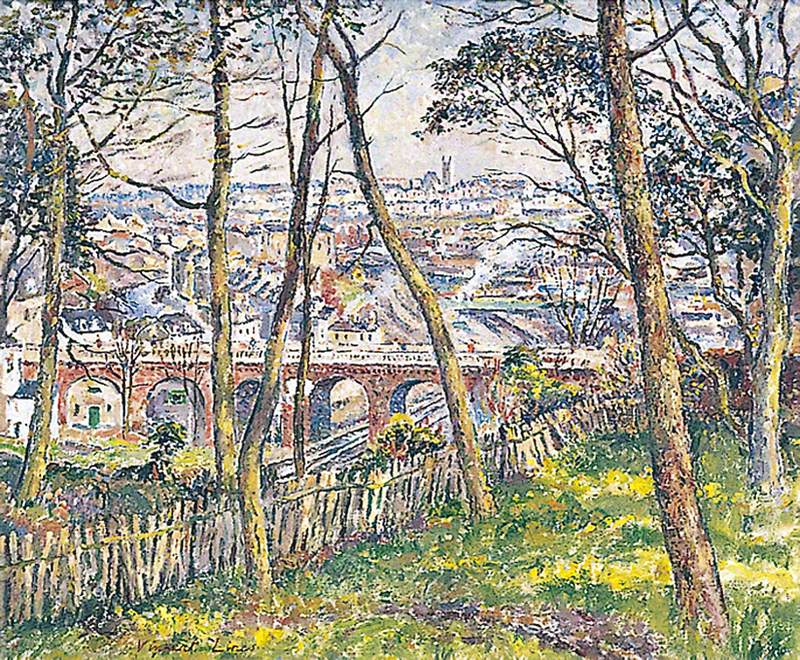
It is easy to see why the uncontroversial work of these gentle Impressionists has been somewhat sidelined in recent years. Nevertheless, they are a part – if a small one – of the story of British art.
James Trollope, author and columnist
James's book Rudolph Ihlee: The Road to Collioure is published by Lund Humphries
Enjoyed this story? Get all the latest Art UK stories sent directly to your inbox when you sign up for our newsletter.
